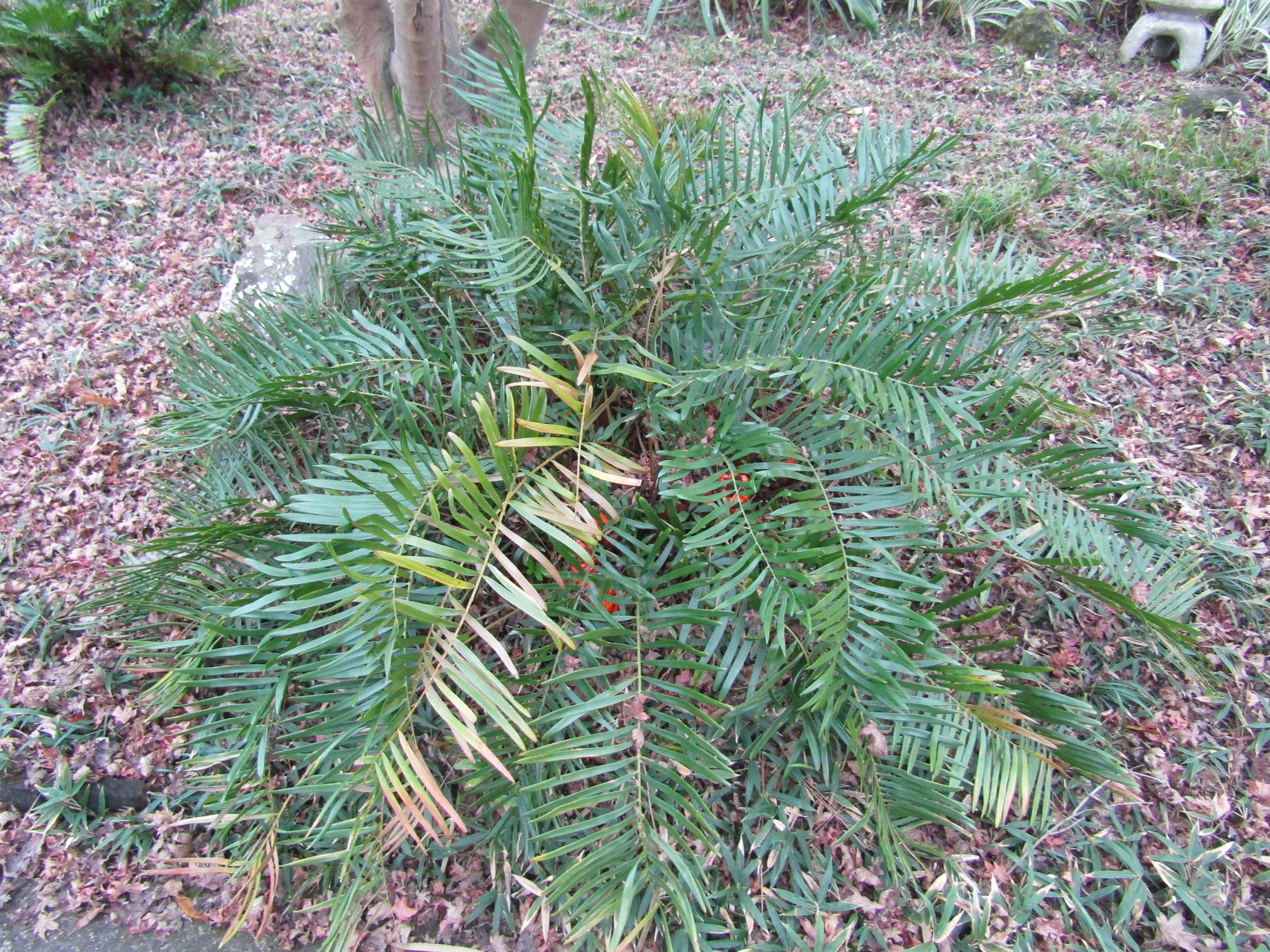
Plants Aren’t Always What They Seem
When you first look at the plant pictured above, what is your initial impression? What type of plant would you suspect it to be? If you said ‘fern’, that would not be surprising. Superficially, it does look a lot like a fern. The leaf and stem structure look similar. However, you would be incorrect in your assessment. Ferns do not produce seeds and reproduce using spores. This is a seed-bearing plant, Zamia integrifolia, also known as the Florida coontie or Florida arrowroot.
The first three plants we looked at in Backyard Florida all belonged to the angiosperms or flowering plants, but this one has no flowers. It belongs to the other category of seed plants, the gymnosperms. The mass diversification of flowering plants beginning around 120 million years ago eventually supplanted the cone-bearing plants that had previously dominated the landscape. The coontie is such a plant, but it is not the kind of species one would initially consider when talking about plants with cones. The first mental image is likely that of a pine cone. This is understandable as various species of pine tree are quite widespread, such as the longleaf pine, Pinus palustris, or slash pine, Pinus elliottii, here in Florida or the eastern white pine, Pinus strobus, of my native New England. Pine trees belong to a group known as conifers, most recognizable for their long, thin, needle-like leaves.
As mentioned earlier, the leaves on Zamia integrifolia don’t have that appearance, instead resembling a fern or a palm. In fact, it belongs to an ancient lineage of seed plants called cycads. Cycads began to develop close to 300 million years ago, about the same time as the conifers, and experienced an intense radiation in species diversity. As a group they are quite hardy, having survived multiple mass extinction events, but the cause of their decline, much like the conifers, is most likely due to increased competition from angiosperms and not the extinctions themselves. That said, although their lineage is ancient, modern cycad species only date back to about 12 million years ago.
Now, you might be saying, ‘I don’t see any cones in that picture.’ That is understandable as they are a bit different from conifer cones and more hidden, making identification more difficult and confusing. Here’s a picture of some Zamia cones.

Each plant contains either the longer, more slender male cones or the more fat and squat females cones, but never both. They require pollinators to transport the pollen from the male cone to the ovules in the female cone. In the case of the coontie, this job is performed by two species of weevil (a kind of beetle). The resulting seeds are orange-red in color (likely the source of the bits of red in the top picture). The plant is also vital for the survival of the atala butterfly, Eumaeus atala, a rare species that exclusively feeds on coontie leaves during the larval stage (you can see two larvae in red above and the adult butterfly below).
For a primarily tropical and subtropical plant, it is surprisingly cold tolerant. It creates an extensive underground root system that can survive while lying dormant even as a freeze kills all of the above-ground leaves. After warmer temperatures return, the stems and leaves can regenerate with no long-term ill effects. These roots also contain specialized structures for housing nitrogen-fixing bacteria. This plant cannot absorb nitrogen from the soil on its own, so it depends on cyanobacteria to convert the nitrogen into a form that it can absorb and use.
Unlike the sabal palm or the firebush, the Florida coontie has not seen much use for human consumption. This is largely due to the fact that all parts of the plant are highly toxic when raw. An edible starch can be produced from the roots, but the process is complex and labor intensive. There was some commercial sale of this starch, until the FDA banned it in 1925. Today, it is primarily used as an ornamental plant, similar to how our previous three plant species highlighted in this category are used.
As always, looks can be deceiving. This is a plant that outwardly looks so straight forward, but when you examine it more closely, you begin to peel back layers of complexity. I think that is one of the reasons why I love sharing these stories with you. This category of ‘Backyard Florida’ especially has been an excellent way to get both you and myself to reconsider our immediate surroundings. You don’t have to go far to experience the wonder and mystery of the natural world. In fact, much of it has been intentionally brought close to you with the main purpose of making things look pretty. The real trick is learning how to reach beyond the pleasing facade and see what really goes on right in front of your nose.